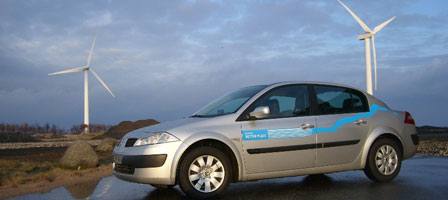The only viable major alternative
The current fad is for electric cars, hugely subsidized by governments. How much longer can they afford such subsidies? Besides, the electricity that substitutes for liquid fuels has to be generated. On balance there is no energy benefit relative to oil, and little or no benefit in reducing production of greenhouse gases.
The vehicles will continue to face consumer resistance because of their high cost (even after subsidies) and performance limitations.
I think electric cars do have a future — because of the immense government-driven policies to promote them, improving battery performance, and lower production costs that will come with greater volume. I just don’t think they can be a major alternative to traditional vehicles fuelled by petrol and diesel for the foreseeable future.
The most viable alternative to oil is natural gas.
It is far more abundant in terms of reserves relative to current demand, especially since technological breakthroughs in the US have made it possible to harvest gas from shale and similar previously largely-ignored resources. Huge reserves are also conveniently located in politically-favourable environments, such as America and Australia.
However, production of “tight gas” and shale gas formerly not viable to exploit has transformed the supply situation, halving US prices for natural gas, which have plummeted relative to oil, with which it competes in some uses.
In the US, the Energy Information Administration says its most likely forecast is for the annual average price of gas at the wellhead to remain below $5 per unit for the next decade. This means gas is likely to remain an attractively-priced alternative to oil for years to come. Perhaps. But low gas prices are also discouraging exploration.
Vehicles driven directly by compressed gas have been around a long time. But they haven’t made much of an impact.
Gas only becomes a serious competitor to oil when converted into liquid fuels. Sasol, the South African specialist, has been doing that successfully on a massive scale for half a century as the second stage of converting coal into oil, and is now exporting its expertise to the rest of the world. It is a partner in a Qatar gas-to-liquids project and has just paid $1 billion for a half-share in a Canadian gas-to-liquids venture.
However, the capital and current costs of converting gas to liquids will limit the potential to substitute natural gas for oil, especially as gas is in such strong demand for easier and more direct uses — power generation, heating, petrochemical feedstock.
Oil itself can be recovered from unconventional resources such as the tar sands of Canada and Venezuela. The deposits are enormous, but they are difficult and expensive to recover and process. Canada’s 170 billion barrels are the world’s second largest oil reserves after Saudi-Arabia. Current production is now about 1½ million barrels a day and announced investment plans should nearly double that before the end of the decade.
But opposition from the environment lobby grows stronger by the year. Recovering oil from the sands is a particularly dirty process and processing usually requires a lot of natural gas, which critics say would be better used directly as a clean fuel.
At prices around $100 or more a barrel, many unconventional resources are economic to exploit.
World reserves of conventional oil have risen by 23 per cent over the past decade – partly because of new discoveries such as offshore Brazil and offshore West Africa, but mainly because steady improvements in industry technology has made it possible to harvest commercially a higher proportion of known resources.
That has – so far – discredited the Peak Oil Theory that production would soon top out and then go into decline because there were no more giant new discoveries to be made.
this article is a continuation from – Investing in Liquid Sunshine
and is followed by – Where can extra supplies come from?
CopyRight – OnTarget February 2011 by Martin Spring







